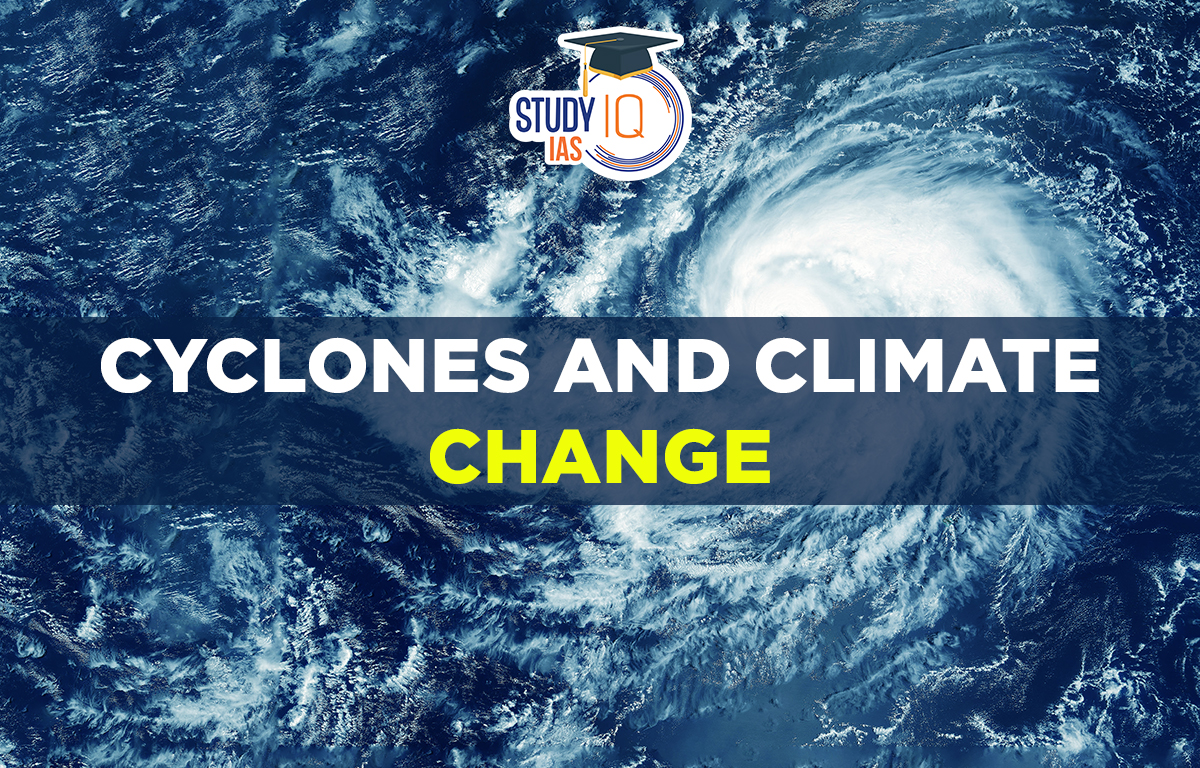Table of Contents
What is a Tropical Cyclone?
- A tropical cyclone is a low-pressure system that forms over warm tropical waters and moves over to the coastal areas bringing violent winds, very heavy rainfall and storm surge.
- The direction of winds in the cyclone is anti-clockwise in the northern hemisphere & clockwise in the southern hemisphere.
- Conditions for formation:
- Sea temperature: A large sea surface with a temperature higher than 27° C is suitable for the formation of tropical cyclones.
- Location: Tropical cyclones form in areas between the Tropic of Cancer and the Tropic of Capricorn where the temperature is optimum.
- Coriolis force: The formation requires the presence of the Coriolis force. Hence they are formed away from the equator.
- Vertical wind speed: There must be small variations in the vertical wind speed.
- Upper divergence: A well-developed divergence in the upper layers of the atmosphere is required so that the rising air currents within the cyclone continue to be pumped out and low pressure is maintained at the center.
- High humidity: High humidity (around 50 to 60 per cent) is required in the mid-troposphere for the formation of a cumulonimbus cloud.
Mechanism of Formation

Role of Climate Change in Formation
- Temperature rise: The temperature of the ocean and atmosphere are critical to the formation of tropical cyclones.
- The storm gains strength during the release of heat when water that evaporates from the ocean’s surface condenses into the storm’s rain.
- A warmer ocean, due to temperature rise, produces more evaporation, which means more water is available in the atmosphere.
- Increase in rain: A warmer atmosphere can relatively hold more moisture, which allows more rain. More rain releases more heat, and more heat released means stronger winds.
- Recent studies have shown that rainfall rates in hurricanes increase by at least 7% per degree of warming.
- Intensification of storms: The increase in a warming climate will increase wind speeds and the proportion of storms that intensify into powerful Category 4 or 5 storms will increase.
- Sea level rise: Rising temperatures are causing a rise in sea levels, which increases the water height. As water height increases, the stormwater is able to reach deeper territories.
- Slowing speed of the storm: The speed of the storm can be an important factor in total rainfall amounts at a given location. Slower speed provides a longer period of time for the rain to accumulate.
- Studies have shown that the speed of storms has slowed down but the possible mechanisms are not yet understood.
- Merger of storms: In an increasingly warming world, a merger between two large tropical storms over any of the global oceans could lead to the formation of a mega cyclone.
Implications for the World
- Increased damage: More intense storms can have a bigger impact on lives and economies. The impact of a Category 4 storm is roughly 256 times that of a category 1 storm.
- Unreliable forecasts: Fast changing nature of storms has made traditional forecast methods ineffective. This has affected precautionary measures.
- Change in impact area: New research shows that the location where storms reach their maximum intensity is moving poleward.
- This would have important implications for the location of the storms’ main impacts.
- Increased frequency of storms: The number of hurricanes that form each year may change in future. However, there is no definitive theory explaining the number of storms in the current climate, or how it will change in the future.
Challenges for the Future
- Limited data: The world has limited reliable historical data for detecting long-term trends of a warming climate on tropical storms.
- El Niño and La Niña: Natural climate variations, such as El Niño and La Niña, could have a substantial impact on whether and where hurricanes develop.
- It will be necessary to know how natural variations will change in the future and influence future hurricane activity.


 How African Reserves Eliminated Rhino Po...
How African Reserves Eliminated Rhino Po...
 Why India Needs Its Own Economic Model?
Why India Needs Its Own Economic Model?
 Challenges in India’s Airline Sector: ...
Challenges in India’s Airline Sector: ...

























